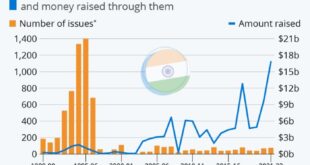Can the S&P 500 momentum continue? This question is on the minds of investors everywhere as the market navigates a complex landscape of economic uncertainties, geopolitical tensions, and shifting interest rates. The S&P 500, a benchmark for the US stock market, has experienced a period of remarkable growth, fueled by factors such as corporate earnings, technological advancements, and investor confidence.
However, the sustainability of this momentum remains a topic of debate, with potential risks and challenges looming on the horizon.
This article delves into the current state of the S&P 500, exploring the key factors driving its recent performance and analyzing the potential risks and challenges that could impact its future trajectory. We’ll examine historical trends, compare and contrast past periods of momentum, and discuss the role of economic indicators, geopolitical events, and investor sentiment in shaping the market’s direction.
Ultimately, we aim to provide insights into the factors that will determine whether the S&P 500’s momentum can be sustained or if a correction is on the horizon.
Historical Momentum
The S&P 500 has experienced numerous periods of strong momentum throughout its history, offering valuable insights into the current market’s potential trajectory. Examining past bull markets, their durations, and magnitudes can provide a context for understanding the current market’s dynamics and potential risks.
Past Bull Markets and Their Durations
Analyzing past bull markets and their durations can help gauge the potential longevity of the current momentum. The S&P 500 has experienced several notable bull markets, each with its own characteristics:
- The “Roaring Twenties” bull market (1921-1929)lasted for nearly a decade, driven by rapid economic growth and technological advancements. This period saw the rise of new industries and widespread optimism, culminating in the infamous stock market crash of 1929.
- The post-World War II bull market (1949-1966), fueled by economic recovery and the growth of consumer spending, lasted for 17 years. This period witnessed significant advancements in technology and infrastructure, creating a robust economic foundation.
- The “New Era” bull market (1982-2000), driven by technological innovation, globalization, and deregulation, lasted for 18 years. This period saw the rise of the internet and the dot-com bubble, ultimately leading to a correction in 2000.
- The post-financial crisis bull market (2009-2020), fueled by accommodative monetary policy and economic recovery, lasted for 11 years. This period witnessed significant growth in the technology sector and the rise of digital platforms.
These past bull markets highlight the cyclical nature of the stock market and the importance of understanding the underlying economic and geopolitical factors driving market movements. While each bull market is unique, analyzing their durations and characteristics can provide valuable insights into the potential longevity of the current market momentum.
Historical Patterns and Cycles
Historical patterns and cycles can offer insights into the future trajectory of the S&P 500. One notable pattern is the “Kondratiev Wave,”a long-term economic cycle that suggests periods of economic expansion and contraction lasting approximately 50-60 years. The current cycle is believed to have begun in the early 2000s, with the potential for a downturn in the coming years.
“The Kondratiev Wave is a long-term economic cycle, lasting approximately 50-60 years, characterized by periods of expansion and contraction. The current cycle is believed to have begun in the early 2000s, with the potential for a downturn in the coming years.”
Another historical pattern is the “Shiller P/E Ratio,”which compares the current S&P 500 price to its average earnings over the past 10 years. A high P/E ratio suggests that investors are willing to pay a premium for stocks, potentially indicating a bubble-like environment.
While not a perfect predictor, this ratio can provide insights into market valuations and potential risks.
“The Shiller P/E Ratio compares the current S&P 500 price to its average earnings over the past 10 years. A high P/E ratio suggests that investors are willing to pay a premium for stocks, potentially indicating a bubble-like environment.”
Understanding these historical patterns and cycles can provide a valuable framework for assessing the current market environment and potential risks. While historical patterns are not guarantees of future outcomes, they offer a context for making informed investment decisions.
Factors Driving Momentum

The S&P 500’s recent momentum is a result of a complex interplay of factors, including robust corporate earnings, favorable interest rate environment, and positive investor sentiment. These forces, while not without their complexities, have contributed to the market’s upward trajectory.
Corporate Earnings
Strong corporate earnings are a significant driver of the S&P 500’s momentum. Companies across various sectors have reported healthy profits, exceeding analysts’ expectations. This positive earnings trend reflects the resilience of the US economy and strong consumer demand. For example, the technology sector has witnessed impressive growth, driven by advancements in artificial intelligence, cloud computing, and e-commerce.
This robust earnings performance fuels investor confidence, leading to higher stock valuations and propelling the market upward.
Interest Rates
The Federal Reserve’s monetary policy decisions play a crucial role in shaping the S&P 500’s trajectory. The Fed’s recent actions, including interest rate hikes, aim to control inflation and maintain economic stability. While interest rate increases can potentially slow economic growth, the Fed’s gradual approach and clear communication have helped to minimize market volatility.
The current interest rate environment remains supportive of growth, encouraging businesses to invest and consumers to spend, further bolstering the market’s upward momentum.
Investor Sentiment
Positive investor sentiment is another key driver of the S&P 500’s performance. Factors such as robust economic data, strong corporate earnings, and the Fed’s measured approach to monetary policy have contributed to a generally optimistic outlook among investors. This positive sentiment encourages buying activity, pushing stock prices higher.
Furthermore, the flow of capital into equity markets, driven by factors such as low interest rates and a search for higher returns, further reinforces the upward momentum.
Technological Advancements and Innovation
Technological advancements and innovation are playing an increasingly significant role in shaping the S&P 500’s performance. Companies at the forefront of innovation, particularly in sectors like artificial intelligence, cloud computing, and biotechnology, are experiencing rapid growth and attracting significant investor interest.
These advancements are driving productivity gains, creating new markets, and fueling economic growth, ultimately contributing to the market’s upward momentum.
Do not overlook the opportunity to discover more about the subject of Honest company insiders sell $8.05 million in stock.
Potential Risks and Challenges
While the S&P 500 has shown remarkable resilience and momentum in recent times, it is crucial to acknowledge the potential risks and challenges that could hinder its continued upward trajectory. These factors, both internal and external, can significantly impact market sentiment and influence investor behavior.
Inflation and Rising Interest Rates
Inflation remains a significant concern for investors and policymakers alike. The Federal Reserve’s aggressive interest rate hikes aim to curb inflation, but they also carry the risk of slowing economic growth. Higher interest rates increase borrowing costs for businesses and consumers, potentially dampening spending and investment.
- Impact on Corporate Profits:Rising interest rates can increase borrowing costs for companies, squeezing profit margins and potentially impacting their ability to invest and expand.
- Investor Sentiment:Higher interest rates can make bonds more attractive to investors, potentially diverting capital away from stocks and impacting the S&P 500’s performance.
Geopolitical Uncertainty
Geopolitical tensions and conflicts, such as the ongoing war in Ukraine, contribute to global economic uncertainty and market volatility. These events can disrupt supply chains, impact energy prices, and create a climate of fear among investors.
- Supply Chain Disruptions:Conflicts and geopolitical instability can disrupt global supply chains, leading to shortages and price increases for essential goods and services.
- Energy Price Volatility:Geopolitical events can significantly impact energy prices, influencing inflation and impacting businesses and consumers.
Market Correction or Downturn, Can the S&P 500 momentum continue?
While the S&P 500 has experienced impressive gains, a market correction or downturn remains a possibility. Corrections are a natural part of the market cycle, often triggered by factors such as rising interest rates, inflation, or economic slowdowns.
- Valuation Concerns:Elevated stock valuations, driven by low interest rates and strong earnings growth, can make markets susceptible to corrections. As interest rates rise and economic growth slows, these valuations may become unsustainable, leading to a correction.
- Investor Sentiment:A sudden shift in investor sentiment, driven by negative economic news or geopolitical events, can trigger a sell-off and lead to a market correction.
Investor Strategies
The current market environment presents both opportunities and challenges for investors. With the S&P 500 potentially experiencing continued momentum, understanding different investment strategies and their associated risks becomes crucial. This section delves into various approaches to navigate the market, considering different asset classes and risk management strategies.
Strategies for Navigating Market Volatility
Investors can adopt different strategies to manage risk and capitalize on potential opportunities during periods of market volatility. Here are some prominent approaches:
- Active Management:This strategy involves actively buying and selling assets based on market conditions and individual security analysis. Active managers aim to outperform the market by identifying undervalued securities or timing market movements. This approach requires significant expertise and can be costly due to higher fees.
- Passive Management:This strategy involves investing in index funds or exchange-traded funds (ETFs) that track a specific market index, such as the S&P 500. Passive managers aim to mirror the performance of the underlying index, minimizing active trading and fees. This approach offers diversification and low-cost exposure to a broad market basket.
- Value Investing:This strategy focuses on identifying undervalued securities based on fundamental analysis. Value investors seek companies with strong financial fundamentals but whose stock prices are currently depressed. They believe that the market will eventually recognize the true value of these companies, leading to capital appreciation.
- Growth Investing:This strategy focuses on investing in companies with high growth potential, often in emerging industries or with innovative products or services. Growth investors are willing to pay a premium for companies with strong earnings growth prospects, even if current valuations are high.
- Momentum Investing:This strategy focuses on identifying stocks or assets that have been exhibiting strong price momentum. Momentum investors believe that past price trends are likely to continue, and they seek to ride the wave of upward price movements. However, this strategy can be risky, as momentum can reverse quickly.
Asset Class Considerations
Understanding the potential benefits and risks of different asset classes is essential for portfolio diversification. Here are some key considerations:
- Stocks:Stocks represent ownership in publicly traded companies. They offer the potential for high returns but also carry significant risk. Stocks are generally considered more volatile than bonds, with their value fluctuating based on company performance, economic conditions, and market sentiment.
- Bonds:Bonds represent loans made to governments or corporations. They offer lower potential returns than stocks but are generally considered less risky. Bond prices are inversely related to interest rates, meaning that rising interest rates can lead to declining bond prices.
- Real Estate:Real estate can provide diversification and potential for income generation through rental properties. However, real estate investments can be illiquid and subject to market fluctuations, economic conditions, and local regulations.
- Commodities:Commodities are raw materials, such as oil, gold, and agricultural products. Commodity prices are influenced by supply and demand factors, as well as geopolitical events. Investing in commodities can offer inflation protection, but it can also be volatile and subject to price fluctuations.
Portfolio Diversification and Risk Management
Diversification is a key principle in investing, aiming to reduce risk by spreading investments across different asset classes, sectors, and geographies. Diversification can help mitigate the impact of adverse market events on a portfolio.
- Asset Allocation:The allocation of assets across different asset classes is a critical element of portfolio diversification. It involves determining the percentage of the portfolio to be invested in stocks, bonds, real estate, and other assets. The optimal asset allocation depends on individual risk tolerance, investment goals, and time horizon.
- Risk Management:Risk management involves identifying, assessing, and mitigating potential risks to a portfolio. This can include strategies such as setting stop-loss orders to limit potential losses on individual investments, diversifying across different asset classes and sectors, and rebalancing the portfolio periodically to maintain the desired asset allocation.
- Investment Horizon:The time horizon for an investment is also crucial for risk management. Longer-term investors have more time to recover from market downturns, while shorter-term investors may need to be more cautious.
Ultimate Conclusion
Navigating the current market environment requires a nuanced understanding of the forces at play. While the S&P 500 has demonstrated impressive momentum, it’s crucial to acknowledge the potential risks and challenges that could impact its future performance. By carefully analyzing historical trends, current market conditions, and potential future scenarios, investors can develop informed strategies for managing their portfolios and maximizing their returns in this dynamic and uncertain market landscape.
The key to success lies in a combination of informed decision-making, strategic diversification, and a long-term perspective.
Frequently Asked Questions: Can The S&P 500 Momentum Continue?
What are the key drivers of the S&P 500’s recent momentum?
The S&P 500’s recent momentum has been driven by factors such as strong corporate earnings, low interest rates, and investor confidence. Technological advancements and innovation have also played a significant role.
What are the potential risks to the S&P 500’s momentum?
Potential risks include rising inflation, increasing interest rates, geopolitical uncertainty, and a potential market correction. These factors could negatively impact investor sentiment and lead to a decline in stock prices.
What are some investment strategies for navigating the current market environment?
Investors can consider strategies such as portfolio diversification, asset allocation, and risk management. Diversifying across different asset classes, such as stocks, bonds, and real estate, can help mitigate risk and potentially enhance returns.
 CentralPoint Latest News
CentralPoint Latest News




